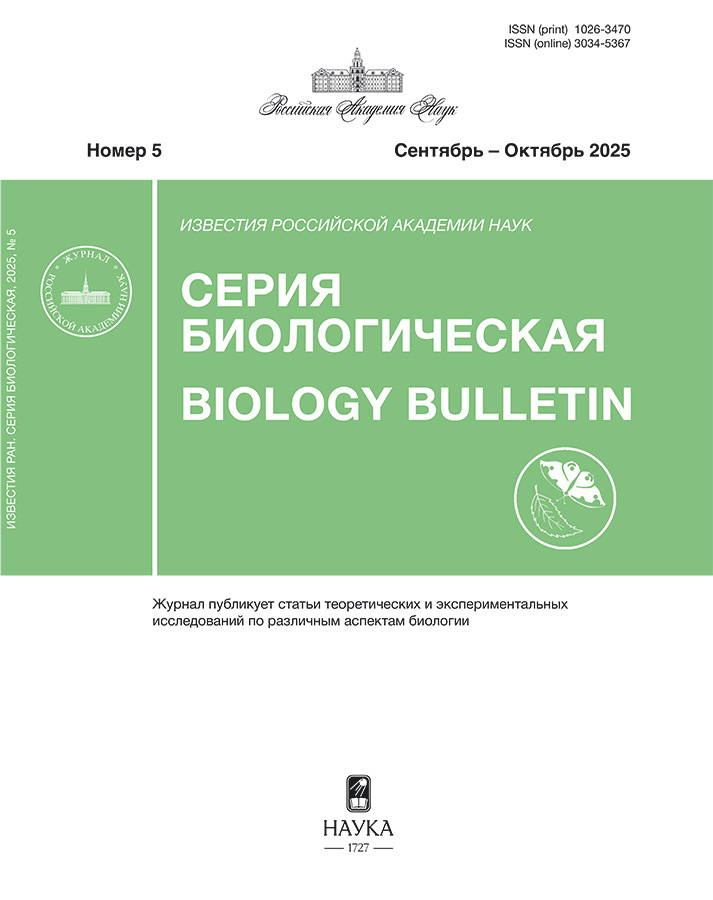Additional Elements in the Posterior Part of the First and Second Upper Molars in Lasiopodomys (Stenocranius) gregalis (Rodentia: Cricetidae)
- Authors: Cheprakov M.I.1
-
Affiliations:
- Institute of Plant and Animal Ecology, Russian Academy of Sciences
- Issue: No 6 (2023)
- Pages: 640-649
- Section: ZOOLOGY
- URL: https://ruspoj.com/1026-3470/article/view/647733
- DOI: https://doi.org/10.31857/S1026347022600996
- EDN: https://elibrary.ru/EVIAKN
- ID: 647733
Cite item
Abstract
It was found that the variability of additional elements in the posterior part of the first and second upper molars in L. gregalis forms a morphological module with a hierarchical structure. This module is designated as an atypical form (Atypical Form), and its phenotype as AF. The phenotype of the typical form is designated as tf (typical form). The main component of modular variability is an increase in the frequency of individuals with AF phenotype with age. The severity of this phenotype also increases with age. The presence of the AF phenotype in individuals is determined monogenously. Individuals with the AF phenotype are dominant heterozygotes or homozygotes. Which phenotype (tf or AF) the dominant heterozygote implements may depend on the influence of modifier genes. The revealed morphological module of the presence of additional elements in the posterior part of the first and second upper molars has a genetic basis.
About the authors
M. I. Cheprakov
Institute of Plant and Animal Ecology, Russian Academy of Sciences
Author for correspondence.
Email: Cheprakov@ipae.uran.ru
Russia, 620144, Yekaterinburg
References
- Ангерманн Р. Гомологическая изменчивость коренных зубов у полевок (Microtinae) // Проблемы эволюции. Новосибирск: Наука, 1973. Вып. 3. С. 104–118.
- Громов И.М., Поляков И.Я. Фауна СССР. Млекопитающие. Т. 3. Вып. 8. Л.: Наука, 1977. 502 с.
- Огнев С.И. Звери СССР и прилежащих стран (звери Восточной Европы и Северной Азии). Т. 7. Microtinae. М.; Л.: Изд-во АН СССР, 1950. 736 с.
- Покровский А.В., Большаков В.Н. Экспериментальная экология полевок. М.: Наука, 1979. 147 с.
- Шварц С.С., Копеин К.И., Покровский Ф.В. Сравнительное изучение некоторых биологических особенностей полевок и их помесей // Зоол. журн. 1960. Т. 39. Вып. 6. С. 912–926.
- Bezerra A.M., Annesi F., Aloise G., Amori G., Giustini L., Castiglia R. Integrative taxonomy of the Italian pine voles, Microtus savii group (Cricetidae, Arvicolinae) // Zool. Scr. 2016. V. 45. № 3. P. 225–236.
- Contoli L. Les Pitymys de l’Italie centrale occidentale (Rodentia, Arvicolidae). Données craniometriques et dentaires // Mammalia. 1980. V. 44. P. 319–337.
- Dienske H. Notes on differences between some external and skull characters of Microtus arvalis (Pallas, 1778) and of Microtus agrestis (Linnaeus, 1761) from the Netherlands // Zool. Meded. 1969. V. 44. № 6. P. 83–108.
- Esteve-Altava B. In search of morphological modules: a systematic review // Biol. Rev. 2017a. V. 92. № 3. P. 1332–1347. https://doi.org/10.1111/brv.12284
- Esteve-Altava B. Challenges in identifying and interpreting organizational modules in morphology // J. Morphol. 2017b.V. 278. № 7. P. 960–974. https://doi.org/10.1002/jmor.20690
- Klingenberg C.P. Studying morphological integration and modularity at multiple levels: Concepts and analysis // Phil. Trans. R. Soc. B. 2014. V. 369. № 1649. P. 20130249. https://doi.org/10.1098/rstb.2013.0249
- Kryštufek B., Shenbrot G. Voles and Lemmings (Arvicolinae) of the Palaearctic Region. Maribor: Sloven. Research Agency, 2022. 449 p.
- Petrova T.V., Zakharov E.S., Samiya R., Abramson N.I. Phylogeography of the narrow-headed vole Lasiopodomys (Stenocranius) gregalis (Cricetidae, Rodentia) inferred from mitochondrial cytochrome b sequences: an echo of Pleistocene prosperity // J. Zool. Syst. Evol. Res. 2015. V. 53. № 2. P. 97–108. https://doi.org/10.1111/jzs.12082
Supplementary files
















